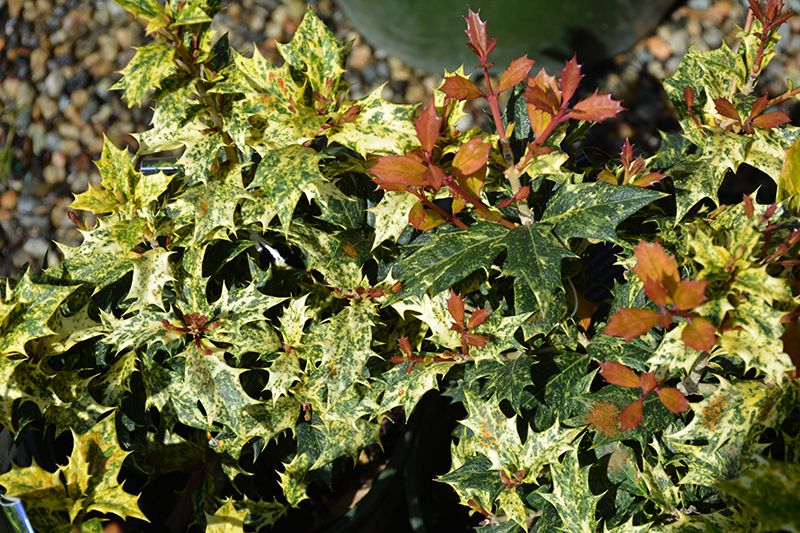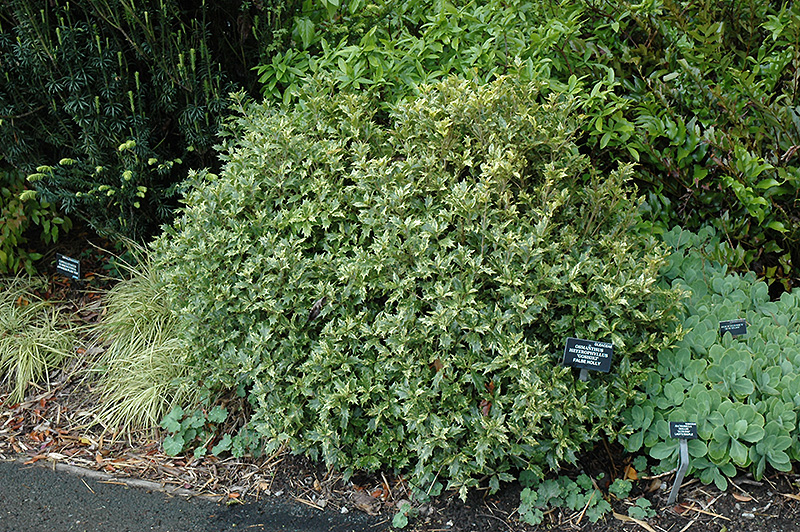Plant Finder
Goshiki Osmanthus
Osmanthus heterophyllus 'Goshiki'
Height: 10 feet
Spread: 8 feet
Sunlight:
![]()
![]()
Hardiness Zone: 6
Other Names: Tea Olive, Olive Holly, Holly-Leaf, False Holly
Description:
This cultivar is similar in looks to holly, but it's actually related to lilac and privet; beautiful golden-variegated leaves are quite ornamental; flowers may not be showy but are extremely fragrant, blooming in fall; more adaptable than holly
Ornamental Features
Goshiki Osmanthus has attractive gold-variegated green foliage which emerges harvest gold in spring on a plant with an oval habit of growth. The spiny pointy leaves are highly ornamental and remain green throughout the winter. It features subtle fragrant white flowers along the branches in mid fall. The smooth khaki (brownish-green) bark is extremely showy and adds significant winter interest.
Landscape Attributes
Goshiki Osmanthus is a dense multi-stemmed evergreen shrub with a shapely oval form. Its average texture blends into the landscape, but can be balanced by one or two finer or coarser trees or shrubs for an effective composition.
This is a relatively low maintenance shrub, and is best pruned in late winter once the threat of extreme cold has passed. Gardeners should be aware of the following characteristic(s) that may warrant special consideration;
- Spiny
Goshiki Osmanthus is recommended for the following landscape applications;
- Accent
- Mass Planting
- Hedges/Screening
- Topiary
Planting & Growing
Goshiki Osmanthus will grow to be about 10 feet tall at maturity, with a spread of 8 feet. It has a low canopy, and is suitable for planting under power lines. It grows at a slow rate, and under ideal conditions can be expected to live for 40 years or more.
This shrub does best in full sun to partial shade. It prefers to grow in average to moist conditions, and shouldn't be allowed to dry out. It is not particular as to soil type or pH. It is highly tolerant of urban pollution and will even thrive in inner city environments. This is a selected variety of a species not originally from North America.
Disclaimer - Rutgers Landscape & Nursery Plant Finder is an online resource representing many of the varieties that we carry over the course of the season, and is intended for informational purposes only. Inventory varies seasonally, so we cannot guarantee that every plant will be in stock at all times - please contact Rutgers directly for current availability.


